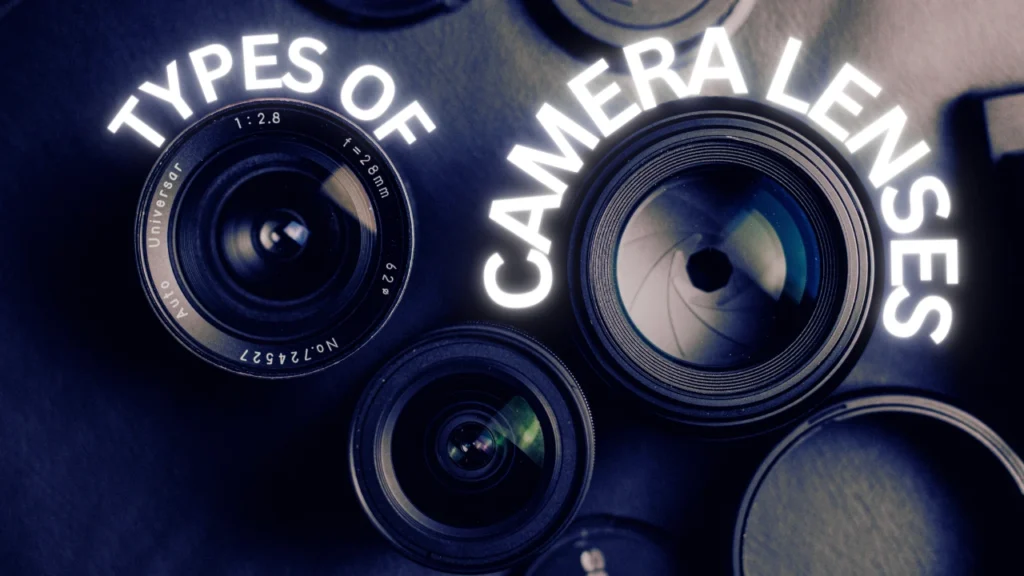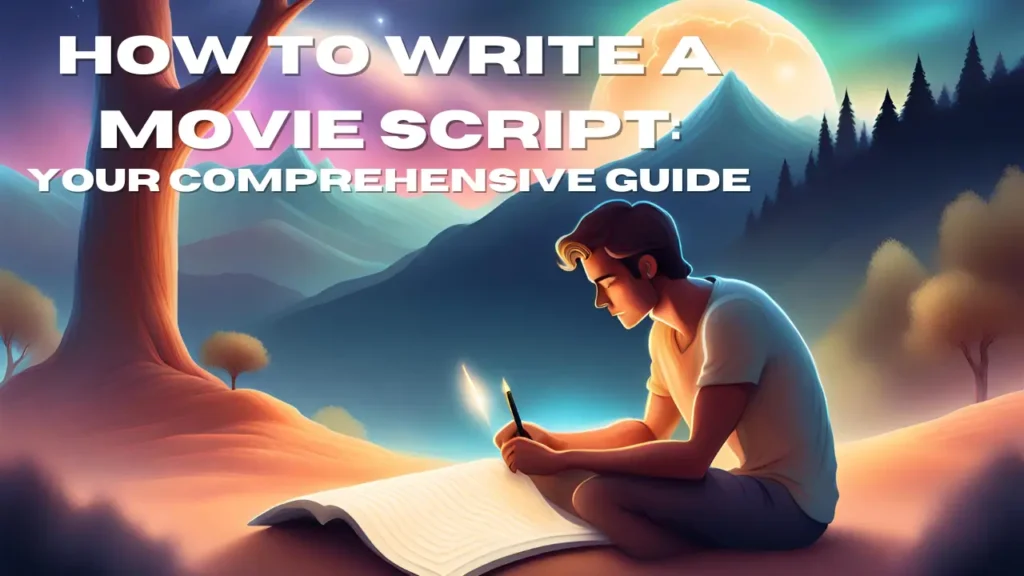Table of Contents
ToggleCamera lenses are the unsung heroes of filmmaking. They’re the key to capturing breathtaking, cinematic shots that transport your audience to another world.
To know more check out the article by Spencer Cox on Photography Life.
But with so many options out there, it can be overwhelming to choose the right lens for your project.
Hey there! Are you feeling overwhelmed and confused about choosing the perfect camera for your filmmaking project? Don’t worry, I’ve got your back! You absolutely need to check out my article called “The Ultimate Guide to Filmmaking Cameras” – it’s a total game-changer.
In this guide, we’ll go over the different types of lenses, their functions, and how to choose the perfect one for your next project.
Types of Camera Lenses
There are several types of lenses that you can use for filmmaking, each with its own unique characteristics and benefits.

Here are some of the most common types of lenses:
Prime Lenses
Prime lenses have a fixed focal length, which means that the lens cannot zoom in or out. They are known for their superior image quality and fast aperture, allowing excellent low-light performance.
Prime lenses are ideal for shooting in controlled environments, such as a studio, where the distance to the subject is known in advance.
Zoom Lenses
Zoom lenses have a variable focal length, which means that you can zoom in or out to get the desired shot. They are versatile and can be used for a wide range of shots.
However, they are generally not as fast as prime lenses and may not have the same level of image quality.
Wide-Angle Lenses
Wide-angle lenses have a shorter focal length than normal lenses, which allows you to capture a wider field of view.
They are great for shooting landscapes and interiors, but can also be used for creative effects, such as exaggerating the distance between objects in a shot.
Telephoto Lenses
Telephoto lenses have a longer focal length than normal lenses, which allows you to zoom in on distant subjects.
They are great for capturing close-up shots of people and objects, and can also be used to compress the distance between objects in a shot, making them appear closer together than they actually are.
Macro Lenses
Macro lenses are designed for extreme close-up shots, such as capturing the details of small objects like flowers or insects.
They have a high magnification ratio and are often used in nature documentaries and other types of filmmaking where capturing small details is essential.
Cine Lenses
Cine lenses are specialized lenses designed for filmmaking. They have a smooth focus and zoom, enabling filmmakers to make subtle adjustments without creating jarring effects.
Cine lenses are also designed to minimize breathing, distortion, and vignetting, making them perfect for high-quality cinematic shots.
Camera Lens Techniques
Filmmakers can use different lens techniques to create specific effects and evoke emotions in their audience.

Here are some of the most popular techniques:
Shallow Depth of Field
A shallow depth of field is achieved by using a wider aperture, resulting in a blurred background and a sharp subject. This technique is often used to isolate the subject from the background and create a sense of intimacy.
Wide-Angle Shots
Wide-angle shots use a shorter focal length, resulting in a wider field of view. This technique is often used to establish a sense of place and create a sense of grandeur.
Telephoto Shots
Telephoto shots use a longer focal length, resulting in a narrower field of view. This technique is often used to create a sense of compression and bring distant objects closer.
Choosing the Right Lens
When choosing a camera lens for your film project, there are several factors to consider, including the type of shot you want to capture, the lighting conditions, and the budget.

Here are some tips for choosing the right lens:
Consider the Shot
Think about the type of shot you want to capture and choose a lens that will help you achieve that shot.
For example, if you want a wide shot of a landscape, a wide-angle lens would be ideal.
If you want a close-up shot of a person’s face, a telephoto lens would be better.
Think About Lighting
Consider the lighting conditions in which you will be shooting and choose a lens with an appropriate aperture. A lens with a wide aperture (low f-stop number) will allow for better low-light performance but may be more expensive.
Consider Your Budget
Lenses can be expensive, so it’s important to consider your budget when choosing a lens. Prime lenses are generally cheaper than zoom lenses, but may not be as versatile.
Consider renting lenses if you need a specific lens for a project but don’t want to purchase it outright.
Aperture
The aperture of a lens determines how much light enters the camera. A wider aperture allows more light, resulting in a shallower depth of field and better low-light performance.
Focal Length
The focal length of a lens determines the field of view and magnification of your shot. A shorter focal length provides a wider field of view, while a longer focal length provides a narrower field of view.
Image Stabilization
Image stabilization is crucial for handheld shots, especially with longer focal-length lenses. It helps reduce camera shake and produces smoother shots.
Compatibility
Make sure that the lens you choose is compatible with your camera. Different cameras have different mounts, so make sure to check the lens mount before purchasing.
FAQs
Can I use photography lenses for filmmaking?
While photography lenses can be used for filmmaking, they may not be ideal. Cine lenses are designed specifically for filmmaking and provide smoother focus and zoom control.
Do I need multiple camera lenses for my project?
It depends on the project and the shots you want to achieve. Having multiple lenses can provide more flexibility and allow you to create a variety of shots.
Are cine lenses more expensive than other types of camera lenses?
Yes, cine lenses are generally more expensive than other types of lenses because they are designed specifically for filmmaking and have specialized features.
Can I rent camera lenses instead of buying them?
Yes, renting lenses can be a cost-effective option, especially for one-time projects or when you need a specific type of lens that you don’t own.
How do I know which lens to choose for my project?
Consider the type of shots you want to achieve, the lighting conditions, and the overall tone and mood of your project. Research different lenses and read reviews to help make an informed decision.
Conclusion
Choosing the right camera lens is an important part of filmmaking. Understanding the different types of camera lenses and their unique characteristics can help you make the right decision for your project.
Keep in mind the type of shot you want to capture, the lighting conditions, and your budget when choosing a lens. With the right lens, you can take your filmmaking to the next level.






